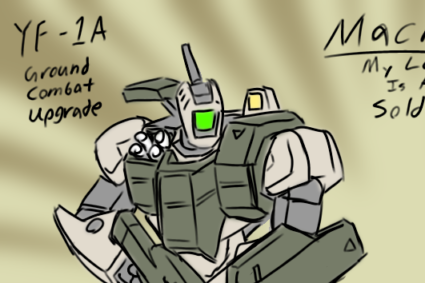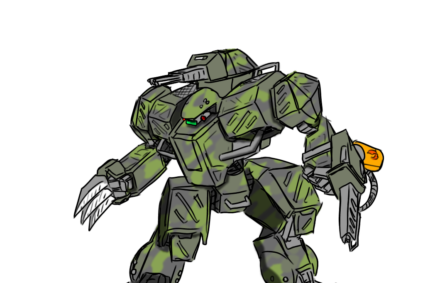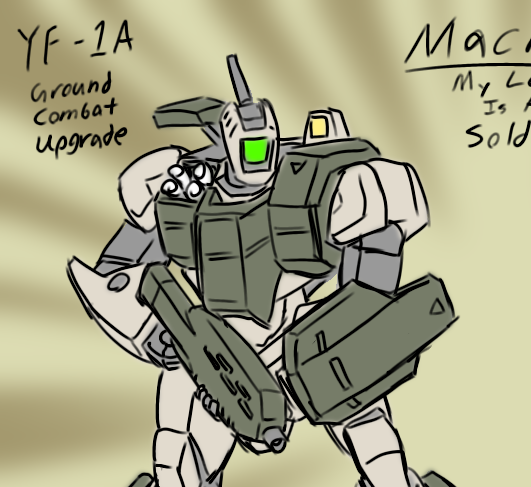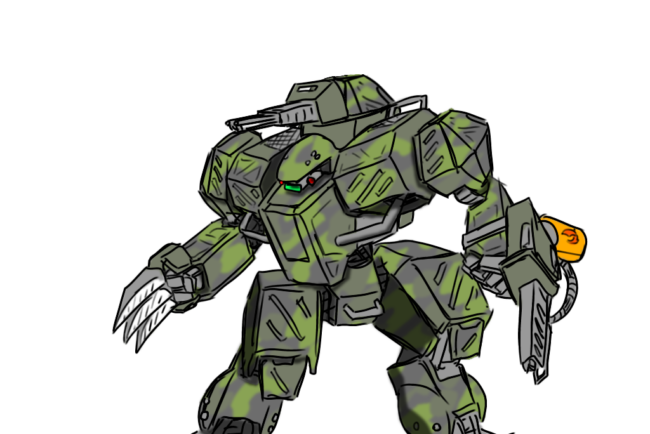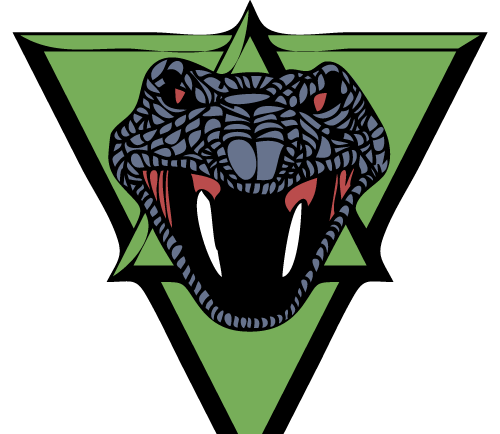
Advanced Tactical ProtoMech Interface
The Advanced Tactical ProtoMech Interface is a modern design which combines interface cockpits with powersuits to allow effective piloting of a ProtoMech. This technology also allowed for a tentative modernization of BattleMech cockpit technology, like on the Zaku and Zaku II.
History of the design
Experiments in trying to make ProtoMechs more of a functional military unit started with Clan Hell’s Horses in the late 3080s, where they started adapting multiple forms of interface cockpit and VDNI for service on a “larger target population”, with less debilitative effects. While their experiments led to some advances, this took a step back as a lot of the Hell’s Horses military development budget switched over to the TankWarrior and QuadVee projects.

Negotiating with the Horses, Clan Ghost Bear (and more specifically Bergan Industries) acquired their research in the early 32nd century. With limited resources invested in the ProtoMech development program, they did build an interface suit comparable to allow for simpler control of the smaller ‘Mechs. While the pilots would still require a few implants, those were simpler designs and less intrusive than previous ProtoMech interfacing technology. The main issue really came down to the “size” of the pilots, which could still not really go beyond “small and smaller”. The investment did allow for ASF pilots that tested down to easily take over a position as a ProtoMech pilot if they were okay with living through the implantation process. Bergan, while making a small sum off the program, decided to sell the process to a few other major “unaffiliated” corporations throughout the Inner Sphere.
Corporate takeover
Mitsubishi, on Oriente, was the first one to buy it and begin pushing experimentation to the next level. Without increasing the size of the ProtoMech cockpit (either in weight or sheer volume), Mitsubishi found no way to let pilots not use the interfacing suit but improved on the connectivity and dampening of the suit. This reduced once again how negatively it would affect the pilot (outside of the Enhanced Imaging system).
It was IBM, which had purchased the rights from Bergan, which found a solution to the Enhanced Imaging interface, by improving the very EI relationship with the nervous system of the creature it was implanted in. While not as eƯective as standard Enhanced Imaging, this new interface still allowed the pilot to connect directly to the sensors of a machine. IBM patented the system and released it to the general public, with Mitsubishi jumping on it by 3112 to expand on their ProtoMech and Battle Armor programs.
Both IBM and Mitsubishi began producing “simplified” ProtoMech cockpits by 3115, with Bergan “buying back” their own technology for more experimentation. While ProtoMechs in the one to three tons range could not be reconciled with the new design, anything larger than that could accommodate the interface suit and new EI system with minimal modifications.
LAW and WSM
Expanding on the design was Luthien Armor Works, which used the interface suit in actual an actual BattleMech to see if it could work, with limited success at first. The interfacing on the larger BattleMechs required a standard cockpit to be used still at the time, which had no real value to the Dragon. Their experimentation however allowed Whitworth Specialty Manufacturing to miniaturize the standard BattleMech cockpit for use with the Interfacing suit, which was further copied by Clan Jade Falcon and Clan Sea Fox in their HOTAS cockpit suites. This further reduced the intrusiveness of the design implants, with three ports in the back of the head, one in the lower brain, and two behind the ears, along with one in the lower spinal cord.
The Corporate ProtoMechs
With these enhacements, by 3140, Mitsubishi came out with the Eclipse ProtoMech as their first truly “in-house” design meant for the corporate security market. Using an Advanced Tactical ProtoMech Interface, at 6 tons, it was the smallest Mitsubishi was willing to go and required pilots shorter than 1.65 meter, meaning women were hired as pilots in larger amount than men. In 3142, Bergan launched a new version using the new cockpit-interface assembly for the Gorgon and Hydra protomechs. While they did not gain great acclaim, those were adopted by a few specialized security units.

The Raven Alliance challenged the Ghost Bear’s touman for rights to use the technology in 3144, which they won but were told they would still require to pay rights fee to Mitsubishi and IBM. Even with these limitations, a new control version of the Hippogriff was released, along with a retooling of the Roc in 3146.
the latest in Protomech technology was introduced by Clan Wolf right after the Battle of Terra, with the introduction of new Quad protomechs using a similar format of interface suit cockpit, but fitted to genetically engineered dogs instead of humans, to reduce the usage of feralize and the risks it brought.
Advanced Hands-on-Throttle-and-Stick cockpit
Game rules: Like a small cockpit, the HOTAS cockpit weighs 2 tons and only features 1 life support critical slot. The HOTAS cockpits require the pilot to have the necessary implants to wear an interface suit but suffers no penalties to their piloting checks when they wear the suit. The HOTAS cockpit costs double the cost of a regular cockpit.
